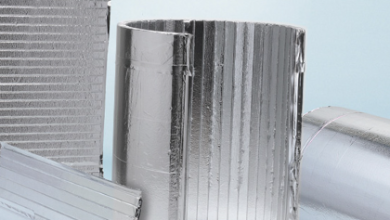Solenoid Valve: How Does It Work?

You’ve probably used multiple solenoids today. Every day, they start your car, ring your doorbell, and do hundreds of other things for you. Where do solenoids come from and how do they work?
The solenoid produces an electromagnetic field around a movable core called an armature. By moving in response to an electromagnetic field, an armature opens and closes valves or switches, converting electrical energy into mechanical motion and force.
Despite being such an integral part of our lives, solenoids are simple mechanisms that require only a basic grasp of physics learned during middle school. It is not difficult to learn their secrets, and you do not need to know any mathematical formulas.
What Is A Solenoid?
The simplest kind of solenoid is a length of wire wound around a core. The core is usually composed of two parts– a stationary core and a moveable one called the armature. Both parts are spring-loaded.
The electrical current in the wire creates a magnetic field that moves the armature away from the stationary core (or towards it, depending on the solenoid’s use and construction). The spring snaps the armature back into place when the current stops.
Due to its back-and-forth motion, this type of solenoid is a linear solenoid. However, there are also highly complex rotary solenoids.
A solenoid must have three things in order to function:
- Coiled wire
- A movable core
- Electricity
You have nothing if you remove the coiled wire. Remove the electricity and you have a spring. Take away the core, and you’re just holding an electromagnet.
The three elements of an ignition system work together to move the armature, which in turn completes the circuit that ignites your engine. As soon as you let go of your key and it moves away from the “start” position, the solenoid deactivates and the armature returns to its previous position, breaking the circuit. In this way, your car’s ignition stops trying to start the engine because it is already running.
Electromagnetism is used by a solenoid, but it is not itself an electromagnet. The solenoid depends on electromagnetism for its operation. However, many people use the terms interchangeably.
What Is A Solenoid Valve?
The solenoid valve is just like any other valve in that it regulates the flow of gases or liquids. By utilizing a solenoid, those valves can be opened or closed via electricity.
There are two types of valves that can be made in this way: normally open and normally closed.
The solenoid valve is in its off position, which means no current flows through its wires and the movable core is resting against the valve’s base. This seals the valve because the liquid or gas behind it cannot pass through.
By sending electricity through the coil of wire, a magnetic field is created, which causes the core to lift up and the liquid or gas is now free to pass through the valve. As soon as the electricity is turned off, the core drops back down, closing the valve and stopping the flow of gas or liquid. A normally closed valve does this when it remains closed until it is opened by electricity.
Normally open solenoid valves operate on the same principles, but in reverse. When in the off position, the core remains in the up position, allowing media to pass through the open valve. Turning on the valve will force the core to move down, shutting off the flow and closing the valve.
The Strength of a Solenoid
You’ve probably used a small solenoid before if you’ve ever used a pneumatic tool. The compressor contained pressurized air. As you pressed the trigger of your nail gun, you wanted a puff of compressed air to drive a nail in. When you did this, a solenoid valve opened for a fraction of a second, allowing a dose of pressurized air to shoot from the compressor to the gun and drive the nail.
Changing a valve as small as that one doesn’t require much power, but a solenoid in a larger tool-perhaps handling more liquid or gas-may require more. A solenoid’s power is derived from the number of coils in the wire and the current flowing through it.
The magnetic field equation is governed by Ampere’s law, which is a mathematical equation that considers these elements to determine electromagnetic field strength. This equation allows one to figure out how many coils and how much current one needs to properly power a solenoid valve.
Applications
Depending on the application, stronger or weaker solenoids are used. It is not necessary to use a large, powerful solenoid with many coils and a large electrical current to make your doorbell ring. You can use a small solenoid instead.

A solenoid valve on an oil derrick, however, would need to be much more powerful. While all solenoids are electrical-you can’t have an electromagnet without electricity-the variety of jobs they do requires different kinds.
- Electrical. As solenoid valves must involve electricity, this term applies to all of them.
- Pneumatic. As a result of these solenoid valves, gasses such as air, nitrogen, and carbon dioxide can be moved and suppressed.
- Hydraulic. From water to bourbon to gasoline, this valve controls the flow of liquids.
There are solenoids and solenoid valves everywhere in modern life, and they make many of the tasks we do every day easier.
Testing A Solenoid
Sometimes, your solenoid valve may stop opening and closing, or your car’s solenoid might not work. For fixing these problems, it is crucial to diagnose them, so here are some easy ways to do that.
The easiest way is with a compass. Your solenoid runs on electromagnetism, so if it’s not working, there won’t be a magnetic field around it.
If you place a compass near the solenoid and then activate it, you’ll know immediately if that is the problem or if there is something else wrong with the machine. When your compass needle jumps, the solenoid created a magnetic field. If not, then your solenoid is not receiving enough electricity to operate properly.
You can further determine the problem with a multimeter in this case. But before you do that, you should check the connections. A faulty or disconnected positive or negative terminal will prevent the solenoid from working, even if it is in pristine condition. Even if the connections look good, you should check the continuity of the solenoid with your multimeter.
As soon as you have determined that the connections are good, switch your multimeter to the resistance setting. When you get a reading over 0.3 ohms, the unit isn’t working properly. It doesn’t conduct enough electricity to work and needs to be replace.
Also, read Water Pressure Reducing Valve for your Apartments
Conclusion
Almost everywhere in our modern world are solenoids and solenoid valves. They start cars, operate dialysis machines and dishwashers, and even manipulate speakers into producing music from an electrical signal. Even though solenoids would change our lives radically without them, they are simple devices
Using only wire, a magnetic core, and an electrical current, solenoids are simple enough to build in a middle school science class, but they help us accomplish hundreds of tasks that would be impossible without them.
Aira Euro Automation is a leading manufacturer and exporter of 1 inch solenoid valve in India. They have a huge chain of industrial valves and Solenoid Valves.





